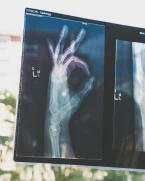Stroke Recovery and Neuroscience Insights: Inspirational Stories.

How My Sister’s Quest for Answers Led Me to Neuroscience
Growing up, my sister always had a lot of questions. She wanted to know how things worked, what made people tick, and why some people struggled with certain tasks while others didn’t. These questions sparked a curiosity in me, and I often found myself joining her on her quest for answers.
As we got older, my sister’s questions became more focused on the brain and how it controls behavior. She was particularly interested in understanding why people with certain brain injuries or disorders experienced specific symptoms. I was intrigued by this line of inquiry and began to read up on the subject in my free time.
Eventually, my sister’s curiosity led her to pursue a career in neuroscience. She wanted to help people who were struggling with brain injuries or disorders and believed that a deeper understanding of the brain could lead to better treatments and outcomes.
Seeing my sister’s passion and dedication to this field inspired me to pursue a career in neuroscience as well. I enrolled in college and began studying the brain in greater detail, learning about the various regions and functions and how they work together to control behavior and cognition.
Through my studies and research, I have come to appreciate the complexity of the brain and the incredible advances that have been made in neuroscience in recent years. I am grateful to my sister for sparking my interest in this field and for encouraging me to pursue my own curiosity.
Today, as a neuroscience researcher, I am proud to be part of a community that is dedicated to unlocking the mysteries of the brain and developing new treatments and therapies for those who need them most. My sister’s quest for answers may have started as a personal curiosity, but it has led to a lifelong pursuit of knowledge and a meaningful career that I am proud to be a part of.
Understanding Mental Illness through Brain Microcircuitry
Mental illness affects millions of people worldwide, yet we still have much to learn about its underlying causes. Scientists have been working for decades to reveal the mysteries of the brain, hoping to find a better understanding of mental illness.
One promising area of study is brain microcircuitry. This field of research focuses on mapping the connections between neurons, the brain cells that transmit information. By studying how neurons communicate with one another, researchers hope to gain insight into how the brain functions and what goes wrong in mental illness.
The brain is an incredibly complex organ, with trillions of neurons and even more connections between them. Studying this complexity requires advanced tools and techniques. For example, scientists can use imaging technologies to track the activity of neurons in real-time, allowing them to observe how information is transmitted through the brain.
Understanding the microcircuitry of the brain is particularly important for mental illness because many conditions are thought to arise from disruptions in communication between neurons. By mapping the connections between neurons, scientists hope to identify which circuits are involved in different mental illnesses, and how they differ from healthy circuits.
This knowledge could lead to better treatments for mental illness, as well as improved diagnoses. By understanding the underlying causes of mental illness, we can develop more targeted and effective therapies.
The study of brain microcircuitry is a promising area of research, but it is still in its early stages. There is much work to be done before we can fully understand the complex workings of the brain. However, with continued advances in technology and increased collaboration among scientists, we may one day be able to unlock the secrets of the brain and develop better treatments for mental illness.
A Life-Altering Experience: Losing the Ability to Walk, Talk and Recall after a Stroke
Imagine waking up one day and finding yourself unable to walk, talk or remember anything about your life. This is exactly what happened to a stroke survivor, whose life was forever changed by a medical emergency.
A stroke occurs when blood flow to the brain is interrupted, which can lead to brain damage and a range of physical and cognitive problems. For this survivor, the stroke affected the area of the brain responsible for language and memory, leaving them unable to communicate or remember anything about their past.
The road to recovery was long and challenging, involving months of physical therapy, speech therapy and cognitive rehabilitation. The survivor had to relearn basic skills like walking and talking, as well as develop strategies to manage their memory loss.
Despite the difficulties, the survivor remained determined to regain their independence and rebuild their life. With the help of their medical team, family and friends, they slowly made progress and eventually regained many of the abilities they had lost.
While the experience was incredibly challenging, it also taught the survivor important lessons about the toughness of the human spirit and the power of determination. The survivor has since become an advocate for stroke awareness and prevention, sharing their story to inspire others and raise awareness about the importance of early intervention and rehabilitation after a stroke.
This story is a reminder that life can change in an instant, but with support, determination, and the right medical care, it is possible to overcome even the most difficult challenges.
The Right and Left Hemispheres of the Brain and Their Different Functions
The brain is an incredibly complex organ responsible for controlling all of our bodily functions, movements, and emotions. One of the most fascinating aspects of the brain is the division of labor between its two hemispheres.
The left hemisphere of the brain is typically associated with analytical and logical thinking, as well as language processing. This is the side of the brain that helps us to analyze and interpret information, to make sense of what we see and hear, and to communicate our thoughts and ideas through language.
The right hemisphere, on the other hand, is more closely associated with creativity, imagination, and spatial awareness. This is the side of the brain that helps us to visualize and interpret visual information, to recognize patterns, and to make connections between different pieces of information.
While both hemispheres are involved in virtually every task we undertake, there are certain tasks that rely more heavily on one side of the brain than the other. For example, solving a math problem might rely more heavily on the left hemisphere, while creating a piece of artwork might rely more heavily on the right hemisphere.
It’s important to note that the left and right hemispheres of the brain are connected by a bundle of nerve fibers known as the corpus callosum, which allows the two sides to communicate with each other. This means that the two hemispheres work together to accomplish complex tasks, with each hemisphere bringing its own unique strengths and abilities to the table.
Understanding the different functions of the right and left hemispheres of the brain can help us to better understand how our brains work, and to appreciate the incredible complexity and beauty of this most important organ.
The silence of the left hemisphere during stroke and finding peace in the right
When someone has a stroke, it can have a significant impact on their brain and their ability to function. In some cases, the left hemisphere of the brain can become silent, causing the person to lose their ability to speak, read, or write. This can be a frightening and frustrating experience, as communication is such an important part of our daily lives.
However, in these situations, the right hemisphere of the brain can step in and provide some comfort. While the left hemisphere is responsible for language and logical thinking, the right hemisphere is more intuitive and emotional. This can lead to a sense of peace and tranquility, as the person is able to tap into a different way of thinking and experiencing the world around them.
Some stroke survivors have described feeling a sense of connection to nature, music, or art during their recovery process. This is because the right hemisphere is better at processing visual and auditory information, and can find joy in these experiences even when language is difficult.
While the effects of a stroke can be devastating, it’s important to remember that the brain is a resilient and adaptable organ. With time, patience, and the right care, it is possible to recover some of the lost abilities and find new ways of experiencing the world.
Overcoming a Golf-ball-sized Clot: An Eight-Year Journey to Recovery
Recovering from a health setback can be a long and challenging journey. It takes patience, perseverance, and a positive attitude to overcome the obstacles that may come along the way. In this story, we follow the journey of someone who faced a life-threatening condition and worked hard to recover fully.
It started with a golf-ball-sized clot that lodged itself in the speaker’s brain, causing a severe stroke. The speaker struggled to speak and move, and their memory was also affected. The road to recovery was a long and difficult one, taking eight years of hard work and dedication. But the speaker never gave up.
During those eight years, the speaker underwent several surgeries and intensive rehabilitation. They worked hard to regain their speech, movement, and memory. Along the way, they also found new interests, such as painting and meditation, which helped them in their recovery journey.
The speaker’s positive attitude and determination were instrumental in their recovery. They never lost hope and believed that they would recover fully. And after eight long years of hard work, they did.
Today, the speaker is back to doing the things they love, like playing the piano and golfing. Their journey serves as an inspiration to others facing similar challenges. It shows that with determination, hard work, and a positive attitude, anything is possible.
Discovering Our Life-Force Power and Choosing Who We Want to Be in the World
As humans, we possess a unique power within us – the power of our life force. This power is what fuels us, drives us, and helps us to become who we want to be in the world. However, it’s not always easy to tap into this power, especially when we face challenges and obstacles in life.
For many of us, it takes a certain moment of awakening or a significant event to recognize our life-force power fully. It can be an illness, a loss, or simply the realization that we are not living the life we want to live. Whatever the trigger, it can lead to a powerful transformation in our lives.
When we tap into our life-force power, we can choose who we want to be in the world. We can choose to let go of negative thoughts and beliefs, and hug positivity and gratitude. We can choose to live in the present moment and appreciate the beauty of life. We can choose to be kind and compassionate to ourselves and others.
Choosing who we want to be in the world is not always easy, but it is within our power to make that choice. It takes courage, self-awareness, and a willingness to step out of our comfort zone. But the rewards are immense. When we choose to be our authentic selves and live in alignment with our values and beliefs, we feel more fulfilled and joyful.
So, let’s hug our life-force power and choose who we want to be in the world. Let’s live our lives to the fullest and make a positive impact on the world around us. Remember, we have the power within us to create the life we want to live.
A stroke of insight: how one woman’s experience can inspire us to live better lives.
In this video, we hear the inspiring story of a woman who experienced a stroke and came out the other side with a new perspective on life. Her experience taught her about the power of the brain to rewire itself, and how we can all tap into that power to create positive changes in our own lives.
Through her journey, she learned about the importance of being present in the moment and hugging our life-force power. She also discovered the power of the right hemisphere of the brain, which can help us find peace and acceptance even in the face of adversity.
Her story serves as a reminder that we all have the ability to choose who we want to be in the world, regardless of our circumstances. By hugging our own life-force power, we can live better lives and make positive changes in the world around us.
So if you’re feeling stuck or overwhelmed, take a cue from this inspiring woman and tap into the power of your own brain. You never know what you might be capable of achieving.
Conclusion
In conclusion, the stories shared in this blog post showcase the remarkable toughness of the human brain and spirit. From stroke survivors to neuroscientists, each individual’s experience highlights the complexity and beauty of the brain and its functions. These stories remind us of the importance of prioritizing our brain health and well-being, whether through exercise, mindfulness practices, or seeking medical attention when necessary. Additionally, these stories inspire us to grow empathy and understanding for those who have experienced brain injuries or mental illness. By sharing these stories and spreading awareness, we can continue to break down stigmas and foster a more compassionate and inclusive society. Let us continue to learn and grow from these experiences and strive towards a healthier, happier world for all.
















